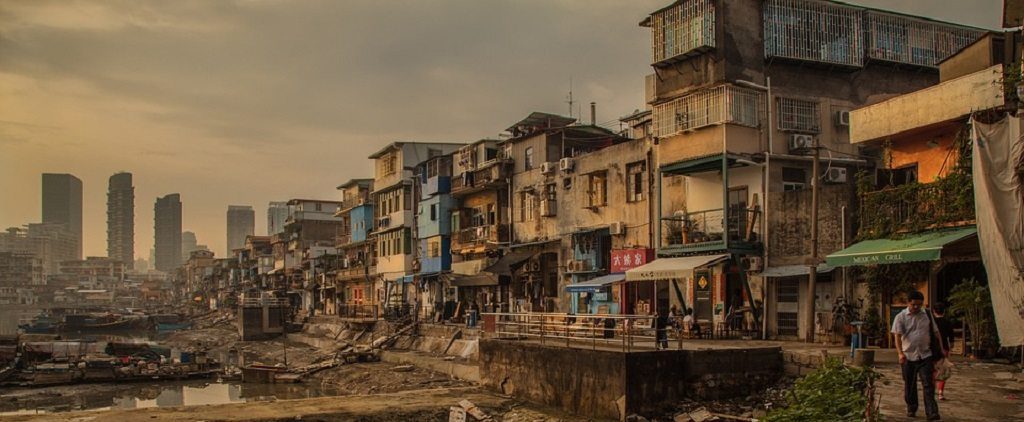[dropcap style=”font-size:100px; color:#992211;”]V[/dropcap]iolent crime rates increase the closer you get to the equator?
A somewhat wobbly premise, reminiscent of Nazi-era brainpan measurements and subsequent racial eugenics, but research from Ohio State University suggests that someone is taking it seriously.
It’s all to do with the faster life strategy experienced by those who live where seasonal variations are lower than in temperate regions, apparently (according what surely amounts to the most patronising and speculative excuse for a research paper we’ve ever seen at Trebuchet).
And, obviously, a tendency to violence has nothing to do with the grinding poverty, vast rich-poor divide, overpopulated living conditions, underfunded or non-existent social provision, political corruption or post-colonial fiscal freefall in the majority of countries placed on or near the equator. Nah, couldn’t possibly be that.
It’s just beacuse they’re not out doing goshdarned healthy pursuits like ‘chopping firewood’, see?
Researchers have long struggled to explain why some violent crime rates are higher near the equator than other parts of the world. Now, a team of researchers have developed a model that could help explain why.
This new model goes beyond the simple fact that hotter temperatures seem to be linked to more aggressive behavior.
The researchers believe that hot climates and less variation in seasonal temperatures leads to a faster life strategy, less focus on the future, and less self-control – all of which contribute to more aggression and violence.
“Climate shapes how people live, it affects the culture in ways that we don’t think about in our daily lives,” said Brad Bushman, co-author of the study and professor of communication and psychology at The Ohio State University.
Paul van Lange, lead author of the study and a professor of psychology at the Vrije Universiteit Amsterdam (VU) added, “We believe our model can help explain the impact of climate on rates of violence in different parts of the world.”
The researchers, which included Maria I. Rinderu of VU, call the new model CLASH (CLimate Aggression, and Self-control in Humans). They describe the CLASH model in an online article in the journal Behavioral and Brain Sciences.
Many studies have shown that levels of violence and aggression are higher in hot climates, according to the researchers.
“But the two leading explanations of why that is so aren’t satisfactory”, Bushman said.
The General Aggression Model (which Bushman helped develop) suggests hot temperatures make people uncomfortable and irritated, which makes them more aggressive. “But that doesn’t explain more extreme acts, such as murder”, he said.
Another explanation (Routine Activity Theory) is that people are outdoors and interacting more with others when the weather is warm, which leads to more opportunities for conflict. But that doesn’t explain why there’s more violence when the temperature is 95 degrees F (35 °C) than when it is 75 degrees F (24 °C) – even though people might be outside under both circumstances.
The CLASH model states that it is not just hotter temperatures that lead to more violence – it is also climates that have less seasonal variation in temperature.
“Less variation in temperature, combined with heat, brings some measure of consistency to daily life”, Rinderu said.
That means there is less need to plan for large swings between warm and cold weather. The result is a faster life strategy that isn’t as concerned about the future and leads to less need for self-control.
“Strong seasonal variation in temperature affects culture in powerful ways. Planning in agriculture, hoarding, or simply preparing for cold winters shapes the culture in many ways, often with people not even noticing it. But it does shape how much a culture values time and self-control,” Van Lange said.
“If there is less variation, you’re freer to do what you want now, because you’re not preparing foods or chopping firewood or making winter clothes to get you through the winter. You also may be more concerned with the immediate stress that comes along with parasites and other risks of hot climates, such as venomous animals.”
People living in these climates are oriented to the present rather than the future and have a fast life strategy – they do things now.
“We see evidence of a faster life strategy in hotter climates with less temperature variation – they are less strict about time, they have less use of birth control, they have children earlier and more often,” Bushman said.
With a faster life strategy and an orientation toward the present, people have to practice less self-control, he said. That can lead people to react more quickly with aggression and sometimes violence.
The theory is not deterministic and isn’t meant to suggest that people in hotter, consistent climates can’t help themselves when it comes to violence and aggression.
“How people approach life is a part of culture and culture is strongly affected by climate,” Van Lange said. “Climate doesn’t make a person, but it is one part of what influences each of us. We believe it shapes the culture in important ways,” he said.
Since CLASH is a new theory, studies have to be done to prove it is correct. But Bushman said a lot of evidence already suggests that the theory may be on to something.
“We believe CLASH can help account for differences in aggression and violence both within and between countries around the world,” he said. “We think it provides a strong framework for understanding the violence differences we see around the world.”
Source: Eurkalert/Ohio State University

Some of the news that we find inspiring, diverting, wrong or so very right.





















